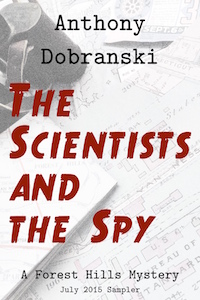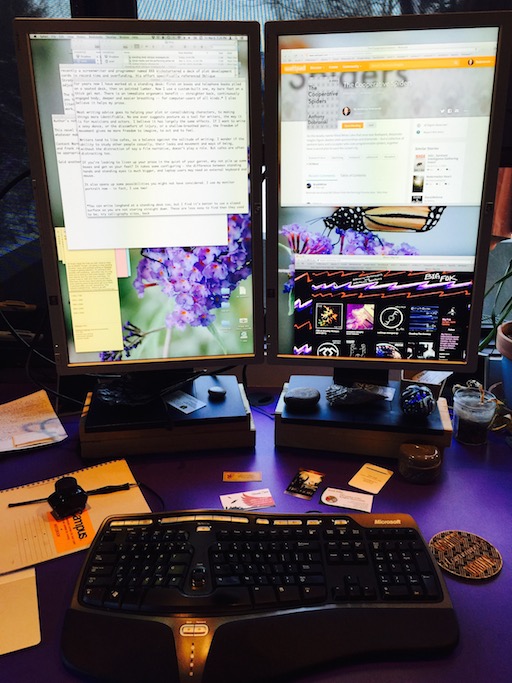For grabbing ideas when inspiration strikes, or trying to make a long wait into useful work-time, an Internet-connected smartphone is a great device. It’s already with you.
Word-processor apps still aim for completeness of function, however, which makes them labored to start – just opening a file can scare a good idea out of one’s head. Text editors are cheap and light, but even for printing, text needs layout and formatting.
If you use Markdown syntax, you can quickly reformat any text into any electronic publication format.
Markdown, invented by John Gruber, is a set of punctuation-mark tags that tell an app reading the file how to format and display text. With Markdown you can tag your notes with headings, emphasis, images and links, all using single or paired punctuation marks.
You can write Markdown in any text editor, from Windows Notepad or Mac TextEdit to word-processors and programmer’s editors. For a long work, it’s convenient to store the file in a cloud folder, but you can write Markdown in an email. To convert it to other formats, it must be saved as a text file, with, by convention, the extension .md.*
To write in Markdown, separate each paragraph with an empty line. Use single or paired punctuation marks for formatting. For example:
- Asterisks (*) and underscores (_) around a word or phrase of text emphasize that text.
- Begin a line with one or more hash marks (#) to make it a heading. One hash mark is Heading 1, two is Heading 2, etc.
- Begin a line with a right angle bracket (>) to indent it.
Other simple marks indent, make formatted lists, and insert links and images. There are variations on Markdown for technical needs, but for a prose writer, Gruber’s original syntax is easy to use.
Gruber’s own command-line converter, written in Perl, will turn Markdown text into HTML. Many other text editor apps on all desktop and mobile operating systems read and convert Markdown. In another post, I’ll discuss Pandoc, a quick document converter that can turn Markdown text into any current text or publishing format.
For more details, visit Gruber’s site Daring Fireball.
Markdown is designed for prose writing. For a script-writing text syntax, look into Fountain.
*If you have an option for encoding, which tells apps how to handle accented characters, most English-language writers should use UTF-8.

